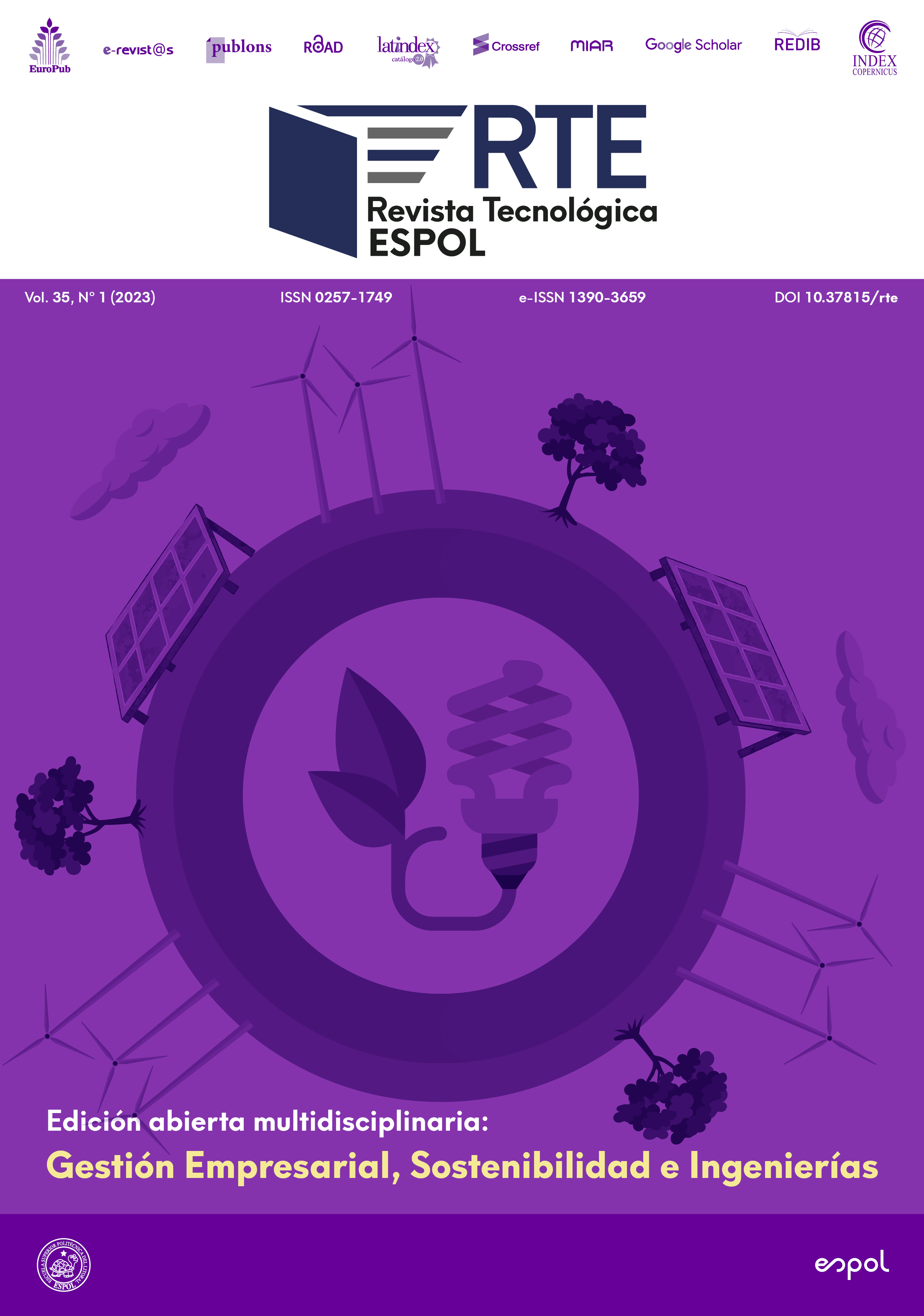The object of study of this investigation is the non-alcoholic beverages sector in Ecuador. Its objective aims to analyze the evolution of the importation versus the elaboration of these products from 2019 to 2021. Methodologically, the investigation has a qualitative approach of exploratory and descriptive type, through documentary research, with a non-probabilistic sample of non-alcoholic beverage manufacturing and importing companies in Ecuador. The results indicate that the non-alcoholic beverage import sector prevails over the country´s production due to the slight added value to the products that are manufactured nationally and that lack innovation aspects. It is evident that most manufacturing companies lack a department for the development of healthy products that benefit consumers.

This work is licensed under a Creative Commons Attribution-NonCommercial 4.0 International License.
References
AIBE. (11 de NOVIEMBRE de 2022). AIBE . https://www.aibe.ec/
Asociación de Industrias de Bebidas No Alcohólicas del Ecuador. (agosto de 2022). https://www.aibe.ec/
Banco Central del Ecuador. (2021). Información estadistica mensual. Quito: Banco Central del Ecuador.
Boston Public. Health Commission. (2010). Hoja informativa sobre las bebidas azucaradas, la obesidad y las enfermedades crónicas. http://www.bphc.org/ whatwedo/healthy-eating-active-living/sugar-smarts/beverage-environment/Documents/ SSB%20Fact%20Sheet%20Update%20June%2030%202014_sp.pdf
Buendia, E. (2013). El papel de la Ventaja Competitiva en el desarrollo económico de los países. Revista Análisis Económico, 55 - 78.
Chiñas, C., & Jaime, D. (30 de Julio de 2019). structura de las exportaciones y competitividad. El caso de México, 1995-2017. Obtenido de https://www.redalyc.org/journal/413/41364527006/html/
Corporación Financiera Nacional. (5 de Febrero de 2021). Industrias Manufactureras.
Corporación Financiera Nacional, CFN. (2022). Industrias Manufactureras: Elaboración de bebidas no alcohólicas embotelladas. Quito, Ecuador: Subgerencia de Análisis de Productos y Servicios, Corporación Financiera Nacional B.P.
Diario El Universo. (12 de abril de 2019). El Universo. Obtenido de https://www.eluniverso.com/noticias/2019/04/12/nota/7281038/1560-millones-litros-bebidas-se-toman-ano/
Geurts, C.-M. (2022). Comercio bilateral entre la Unión Europea y Ecuador. Quito: Delegation of the European Union.
Gil, P. (11 de febrero de 2018). Obtenido de Barreras Arancelarias y no Arancelarias: https://www.clubensayos.com/Negocios/BARRERAS-ARANCELARIAS-Y-NO-ARANCELARIASIMPLICACIONES/4275037.html
Gonzalez, R. (2011). Diferentes Teorías del Comercio Internacional. Tendencias y Nuevos Desarrollos de la Teoría Económica, 103 - 115.
Instituto Nacional de Estadística y Censos. (2020). Encuesta Estructural Empresarial 2020.
Jedlicki, C. (septiembre de 2007). Alianza Global Jus Semper. Obtenido de http://www.jussemper.org/Inicio/Resources/Jedlicki_IntercambioDes.pdf
Krugman, P., & Obstfeld, M. (2006). Economía Internacional: Teoría y Política. Madrid: PEARSON EDUCACiÓN.
Ministerio de producción, comercio exterior, inversiones y pesca. (11 de Noviembre de 2016). Acuerdo Comercial Ecuador – Unión Europea. Recuperado el 18 de 11 de 2022, de Ministerio de producción, comercio exterior, inversiones y pesca: https://www.produccion.gob.ec/acuerdo-comercial-ecuador-union-europea/#
Organización Mundial de la Salud, OMS. (2015). Fiscal policies for Diet and Prevention of Noncommunicable Diseases. México: OMS.
Paraje, G. (2016). The Effect of Price and Socio-Economic Level on the Consumption of Sugar- Sweetened Beverages (SSB): The Case of Ecuador. PLOS ONE, 11(3), 1 - 13.
Rivas, L. (2014). Las bebidas azucaradas, Ecuador. https://prezi.com/-zewyke3om5f/ bebidas-azucaradas/
Segovia, J., Orellana, M., & Sarmiento, J. (2020). Estimación de la demanda de bebidas no alcohólicas en Ecuador. Sinergia, Vol 11, N° 3, Septiembre - Diciembre, 72 - 83.
Sierra, I. (2016). Cepal y la Teoría de la Industrialización. https://www.clubensayos.com/Historia-Americana/CEPAL-Y-LA-TEORIA-DE-INDUSTRIALIZACION/3685503.html#:~:text=La%20CEPAL%20justificaba%20su%20teor%C3%ADa%20de%20industrializaci%C3%B3n%20sustitutiva%3B,por%20los%20importadores%20y%20no%20por%20los%20exportado
Superintendencia de Compañías, Valores y Seguros. (2020). Estados financieros consolidados. Quito: Superintendencia de Compañías, Valores y Seguros.
Superintendencia de Compañías, Valores y Seguros. (noviembre de 2022). Portal información. https://reporteria.supercias.gob.ec/portal/cgi-bin/cognos.cgi?b_action=cognosViewer&ui.action=run&ui.object=%2fcontent%2ffolder%5b%40name%3d%27Reportes%27%5d%2ffolder%5b%40name%3d%27Estados%20Financieros%27%5d%2freport%5b%40name%3d%27Estados%20Financieros
Valverde, A. (2019). Bebidas azucaradas y su importancia en la legislación ecuatoriana. Visión Empresarial N. 9, Enero - Diciembre, 95 - 104.
Wahli, C. (2016). La industria de bebidas se fortalece con inversión. (S. e. Vistazo, Entrevistador)







